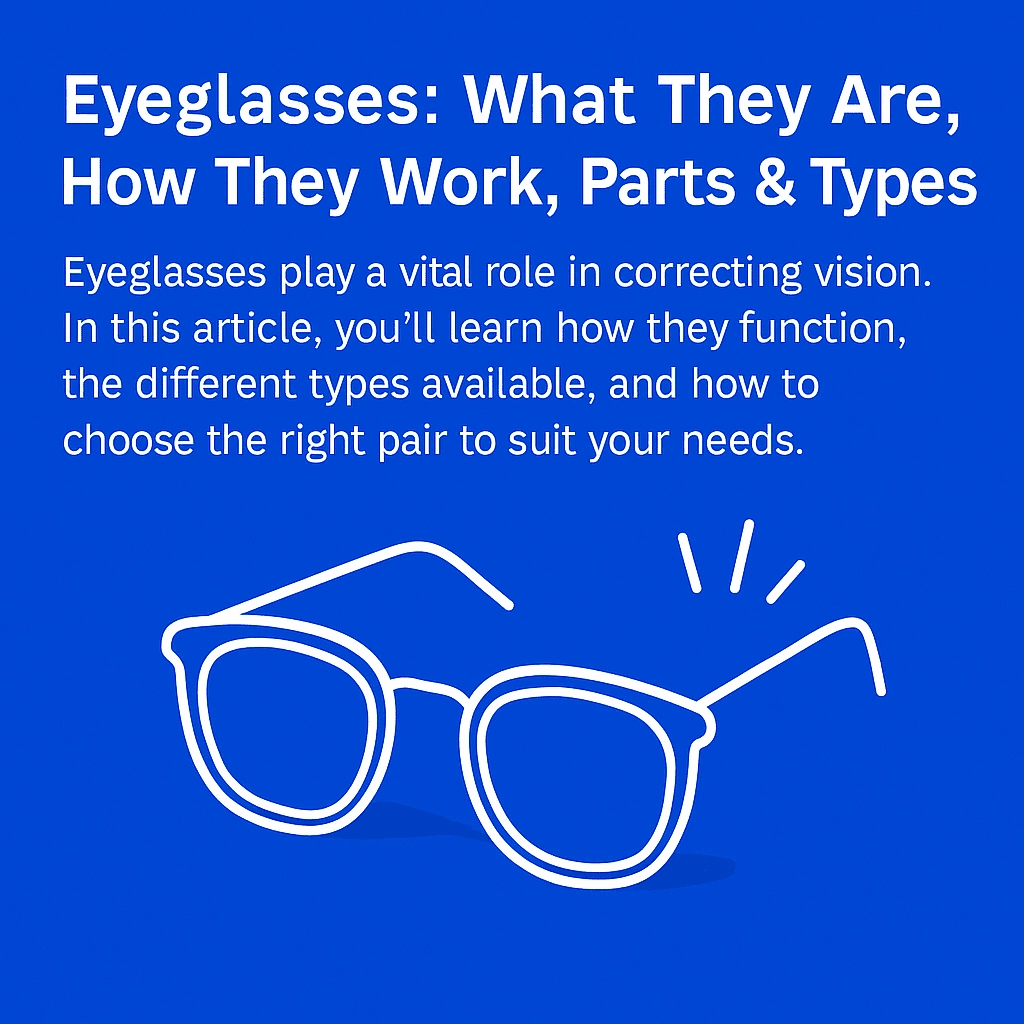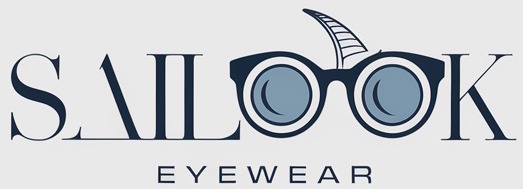Eyeglasses are an essential tool used for correcting vision. Understanding how they work, the different parts involved, and their types can help you make better decisions regarding your eyewear needs. In this article, we’ll dive into the mechanisms behind eyeglasses, explore various types, and discuss their important components. By the end, you’ll have a clear understanding of how eyeglasses function and how to choose the right ones for you or your business.

1. What Are Eyeglasses?
Eyeglasses are optical devices used to correct refractive vision problems. They have lenses fitted into frames and are primarily used to assist individuals who suffer from conditions such as nearsightedness (myopia), farsightedness (hyperopia), and astigmatism.
But here’s the kicker… eyeglasses are not just about vision correction; they also play a role in fashion, comfort, and eye protection. The term “eyeglasses” is commonly used interchangeably with “spectacles,” but both refer to the same type of eyewear designed to aid vision.
A little history about eyeglasses shows that they date back to the 13th century, with the first known pair being created in Italy. Since then, technology has advanced, and today, eyeglasses come in numerous styles, designs, and lenses tailored to specific visual needs.
Eyeglasses work by bending light to ensure it properly focuses on the retina. The lenses, made of different materials, play a crucial role in this process. Modern lenses are often lightweight, strong, and coated to offer enhanced performance.
Table 1: Types of Eyeglass Lenses
| Lens Type | Description | Usage |
|---|---|---|
| Single Vision | Lenses with one focal point for either near or distant vision | Nearsightedness, Farsightedness |
| Bifocal | Lenses with two distinct focal points for near and far vision | Presbyopia |
| Progressive | Lenses without lines that gradually change focal points | General vision correction |
| Reading Glasses | Lenses specifically for near vision | Presbyopia, Near vision issues |
2. How Do Eyeglasses Work?
Eyeglasses work by using lenses to bend light rays entering the eye. This is where it gets interesting… The bending, or refraction, of light helps focus the image on the retina, enabling clearer vision. Lenses come in various forms, depending on the visual problem they’re intended to correct.
For example, people with myopia (nearsightedness) require concave lenses, which are thinner at the center and thicker at the edges. These lenses help diverge light rays, making them focus properly on the retina. On the other hand, people with hyperopia (farsightedness) need convex lenses that are thicker at the center, helping focus light rays directly on the retina.
Eyeglasses also help protect the eyes. Some lenses are coated with protective layers that block UV rays or resist scratches, ensuring durability and reducing the risk of eye damage. Additionally, advancements in technology have led to the creation of lenses that reduce glare and improve clarity.
Table 2: Lens Types and Their Functions
| Lens Type | Visual Issue It Corrects | Function |
|---|---|---|
| Concave | Myopia (Nearsightedness) | Diverges light to focus on the retina |
| Convex | Hyperopia (Farsightedness) | Converges light to focus on the retina |
| Bifocal | Presbyopia | Combines near and far vision in one lens |
| Progressive | General vision correction | Smooth transition between focal points |
3. What are the Different Types of Eyeglasses?
Eyeglasses come in a variety of types, designed to serve different purposes. What’s the real story? Whether you need them for basic vision correction, reading, or protection from the sun, there’s a type of eyeglasses for everyone.
Prescription eyeglasses are the most common type. They are customized to an individual’s vision needs, based on an optometrist’s prescription. For individuals experiencing difficulty seeing objects up close, reading glasses are a great solution. These glasses are specifically designed for near vision and are typically worn while reading, using a computer, or doing tasks that require focus on nearby objects.
Sunglasses with corrective lenses are another popular option. These eyewear types combine UV protection with vision correction. Lastly, protective eyeglasses are designed for people who work in hazardous environments, such as laboratories or construction sites. These glasses provide both vision correction and protection from potential eye injuries.
Table 3: Types of Eyeglasses and Their Purposes
| Eyeglass Type | Purpose | Features |
|---|---|---|
| Prescription Glasses | Correct vision problems | Customized lenses based on a prescription |
| Reading Glasses | Aid near vision | Lenses for close-up tasks |
| Sunglasses | Protect eyes from UV rays, with or without prescription lenses | UV-blocking lenses |
| Safety Glasses | Protect eyes in hazardous environments | Reinforced lenses and impact protection |
4. What Are the Main Parts of Eyeglasses?
The main parts of eyeglasses include the frames, lenses, and other smaller components like nose pads and temples. Ready for the good part? Each of these parts plays a specific role in the overall comfort and effectiveness of the eyewear.
Frames are made from various materials, such as plastic, metal, or a combination of both. The choice of frame material affects both the durability and style of the glasses. The lenses, as discussed, are the most critical part, as they are responsible for correcting vision.
Nose pads are designed to help the glasses sit comfortably on the nose, preventing slippage and reducing pressure. Temples, or the arms of the eyeglasses, keep the glasses in place on your face. They extend from the frames and sit over the ears, providing stability and comfort.
Table 4: Eyeglass Frame Materials
| Material | Benefits | Common Usage |
|---|---|---|
| Plastic | Lightweight, flexible, affordable | Everyday use |
| Metal | Durable, lightweight, hypoallergenic | Stylish and durable |
| Combination | A mix of plastic and metal for aesthetics | Fashion-forward eyewear |
| Titanium | Lightweight, strong, corrosion-resistant | Premium eyewear |
5. How Are Eyeglass Lenses Made?
Eyeglass lenses undergo a precise manufacturing process to ensure the highest quality. But here’s the kicker… The process involves cutting, shaping, and polishing lenses to fit into frames according to the specific prescription.
Lenses are cut from large, flat pieces of lens material, and the shape is adjusted to fit the frame. After cutting, lenses are polished to ensure clarity and smoothness. Coatings, such as anti-reflective or UV-blocking layers, are then applied to enhance their function.
These lenses are then carefully mounted into the frames. Depending on the frame type, different mounting techniques are used to ensure a secure fit, allowing the wearer to enjoy comfort and stability.
Table 5: Lens Coatings
| Coating Type | Purpose |
|---|---|
| Anti-Reflective | Reduces glare and improves clarity |
| UV Protection | Blocks harmful UV rays to protect the eyes |
| Scratch-Resistant | Prevents scratches and enhances lens durability |
| Blue Light Filtering | Reduces blue light exposure from digital devices |
6. What Are Prescription Eyeglasses?
Prescription eyeglasses are customized to meet the specific vision needs of an individual, based on an eye exam and prescription provided by an optometrist. What’s the real story? These glasses are designed to correct vision impairments such as myopia, hyperopia, and astigmatism.
The prescription details the type of lenses required, including their focal power, curvature, and any additional features such as astigmatism correction or near-vision assistance.
Table 6: Common Prescription Types
| Prescription Type | Description |
|---|---|
| Myopia (Nearsightedness) | Difficulty seeing distant objects clearly |
| Hyperopia (Farsightedness) | Difficulty focusing on close objects |
| Astigmatism | Blurry vision due to irregular shape of the cornea |
7. How Do Progressive Lenses Work?
Progressive lenses offer a seamless transition between different focal points, eliminating the visible lines of bifocals. This is where it gets interesting… They are designed to correct vision at multiple distances, from near to far.
Unlike bifocal lenses, which have a visible line between the near and far vision zones, progressive lenses have a gradual transition, providing a more natural viewing experience. The main benefit is the ability to focus on multiple distances without switching between different pairs of glasses.
Table 7: Progressive Lenses Features
| Feature | Benefit |
|---|---|
| Seamless Transition | Smooth adjustment between near and far vision |
| No Visible Lines | Aesthetically pleasing without lines in the lenses |
| Multi-Distance Vision | Corrects vision for various focal distances |
8. Why Are Eyeglasses Important for Eye Health?
Eyeglasses aren’t just about improving vision; they also help protect your eyes. But here’s the kicker… Wearing the right prescription eyeglasses can reduce eye strain, improve focus, and enhance overall eye comfort.
Additionally, regular use of glasses can prevent further deterioration of your vision. They provide clarity, reduce headaches from strained vision, and, in some cases, prevent more serious eye conditions.
9. How Do Sunglasses Help with Eye Protection?
Sunglasses are more than just a fashion statement. Ready for the good part? They serve an important function in protecting your eyes from harmful UV rays, which can lead to long-term eye damage, including cataracts and macular degeneration.
Sunglasses with polarized lenses also reduce glare, making outdoor activities like driving or skiing more comfortable. Choosing high-quality sunglasses with appropriate UV protection is crucial for maintaining eye health.
10. What Are the Advantages of Anti-Reflective Coating on Eyeglasses?
Anti-reflective coatings are designed to reduce the glare from light sources such as computer screens, streetlights, and headlights while driving at night. What’s the real story? These coatings enhance the clarity of vision, making them a must-have for those who spend long hours in front of digital devices.
Anti-reflective coatings also improve the appearance of eyeglasses, as they reduce reflections on the lenses, making the wearer’s eyes more visible.
11. What is the Role of Eyeglass Frames in Comfort?
The role of eyeglass frames extends beyond style. But here’s the kicker… The right frame ensures that the glasses fit comfortably, don’t slip off, and don’t exert excessive pressure on the nose or ears.
Frames come in a variety of materials, including lightweight metals, durable plastics, and flexible acetates. Choosing the right frame material and style depends on personal preferences, as well as the need for durability, comfort, and fashion.
12. How Do Eyeglass Lenses Correct Different Types of Vision Problems?
Eyeglass lenses are specifically designed to correct different types of vision problems. This is where it gets interesting… Nearsightedness (myopia), farsightedness (hyperopia), and astigmatism all require different lens types for effective correction.
For nearsightedness, concave lenses are used to diverge light and focus images on the retina. For farsightedness, convex lenses are used to converge light, ensuring clear vision for both near and distant objects. Astigmatism is corrected using cylindrical lenses to focus light on a single point.
13. What Factors Should You Consider When Buying Eyeglasses?
When buying eyeglasses, it’s important to consider both functionality and style. Ready for the good part? First, you need to get a proper eye exam to ensure you get the correct prescription. Then, consider factors like frame material, lens type, and any additional coatings that might benefit your lifestyle.
14. How Do Eyeglasses Compare to Contact Lenses?
Eyeglasses and contact lenses both serve to correct vision, but each has its advantages. But here’s the kicker… Eyeglasses are easier to put on and remove, and they provide an additional level of eye protection from dust and debris. However, contact lenses are more convenient for certain activities like sports and outdoor activities where eyeglasses may get in the way.
15. Conclusion: Why Eyeglasses are Essential for Eye Health and Comfort
In conclusion, eyeglasses are an essential tool for vision correction and eye health. From various lens types to the comfort provided by frames, choosing the right pair is crucial for clear vision and overall eye protection. Regular eye exams and selecting the best eyewear for your specific needs can significantly improve both your vision and quality of life.
FAQ Section
Q1: What are eyeglasses?
Eyeglasses are optical devices used to correct refractive vision problems by altering how light enters the eye through specially made lenses.
Q2: How do eyeglass lenses work?
Eyeglass lenses bend light to help focus images on the retina, correcting refractive errors like myopia or hyperopia.
Q3: What are progressive lenses?
Progressive lenses are multifocal lenses that offer a seamless transition between different focal points, without the visible lines seen in bifocals.
Q4: How do sunglasses protect your eyes?
Sunglasses protect your eyes by blocking harmful UV rays and reducing glare, preventing long-term damage to your eyes.
Q5: How do I choose the right eyeglasses for my face?
Choosing the right eyeglasses involves considering factors like face shape, frame material, and comfort. Consult with an optician for expert guidance.

